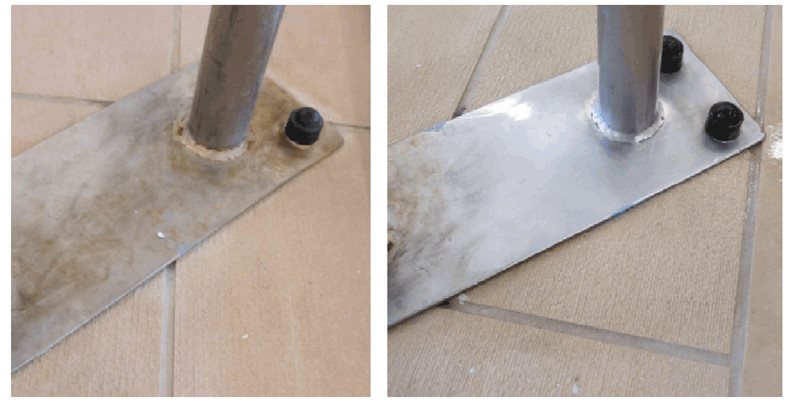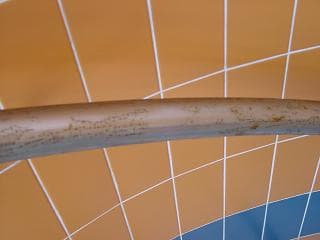

SUS440C stainless steel imported from Japan is used to make bearing parts that work in corrosive environments and non-lubricated strong oxidation. Used in the manufacture of surgical tools. Other properties similar to 3cr13 steel, but poor weldability, usually not as welding material. SUS440C This steel is martensitic stainless steel, the carbon content is higher than 3cr13 steel, so the strength and hardness are higher than 3cr13 steel. In contaminated air (such as atmospheres containing large amounts of sulfides, carbon oxides, and nitrogen oxides), In case of condensation water, sulfuric acid, nitric acid, and acetic acid liquids are formed, causing chemical corrosion. Stainless steel surface adhesion contains acid, alkali, salt substances (Alkaline water on the wall, lime water splashes), causing localized corrosion.Ĥ. For a long time organic acids attack the metal surface.ģ. The surface of the stainless steel adheres to organic matter juice (such as melon vegetables, noodles, soup, etc.), and in the presence of water and oxygen, it constitutes organic acids. In humid air, the condensed water between the attached matter and the stainless steel connects the two into a micro-resistance, which triggers an electrochemical reaction and the protective film is destroyed, which is called electrochemical corrosion.Ģ. The surface of stainless steel contains deposits of dust or other dissimilar metal particles containing other metal elements. There are many forms of this surface film that are damaged.Ĭommon causes of stainless steel rust, there are the following:ġ.

Or the iron atoms in the metal are continuously separated out to form loose iron oxides, and the metal surface is constantly rusted. Once for some reason, this kind of film has been continuously destroyed, and oxygen or oxygen atoms in the air will continuously infiltrate. Prevent the continued penetration of oxygen atoms, continue to oxidize, and get the ability to resist rust. Stainless steel is a very thin and strong and stable chromium-rich oxide film (protective film) formed on its surface. Therefore, not any kind of stainless steel, are resistant to corrosion in any environment, it does not rust. Such as 304 steel pipe, in the dry clean atmosphere, there is absolutely excellent resistance to corrosion, but it will be moved to the sea area, in the sea fog containing a lot of salt, will quickly rust However, 316 steel pipe performed well. However, the corrosion resistance of the steel varies with the chemical composition of the steel itself, the mutual state, the conditions of use, and the type of environmental media. Stainless steel bearings have the ability to resist atmospheric oxidation - that is, stainless, but also have the ability to resist corrosion in media containing acid, alkali, and salt - that is, corrosion resistance. Stainless steel bearings will rust under certain conditions. It may be a problem with steel." In fact, this is a one-sided misconception about the lack of understanding of stainless steel bearings. People are greatly surprised: "Stainless steel bearings do not rust, and rust is not a stainless steel bearing. Citrisurf can be used on clean or already rusted stainless steel.When brown rust (spots) appear on the surface of stainless steel bearings, Proper stainless steel passivation with Citrisurf will reduce or eliminate corrosion on stainless steel. Passivation to Prevent Stainless Steel Rust In all environments, properly passivating your stainless steel will prevent it from rusting. Salt water environments affect stainless steel, just to a lesser extent than carbon steel. Environments with chlorine, like swimming pools, are highly corrosive. The environment is another big factor in stainless steel rust. Even within grades of stainless steel, impurities in the steel can affect the corrosion resistance. The composition of the steel affects corrosion resistance. There are a few factors that can affect the corrosion resistance of stainless steel.

Passivating stainless steel is a process that allows stainless steel to retain its corrosion resistance. To prevent stainless steel from rusting, you need to passivate it. However, over time, rust can and will develop on stainless steel. Generally, the higher the chromium content, the less likely the steel will rust. There are over 150 grades of stainless steel and some are more prone to corrosion than others. If you are experiencing rust on your 'stainless' steel, you are not alone as we often have customers call us looking for help with that very same issue rust on their stainless steel. I have rusted stainless steel, I thought stainless steel couldn't rust?


 0 kommentar(er)
0 kommentar(er)
